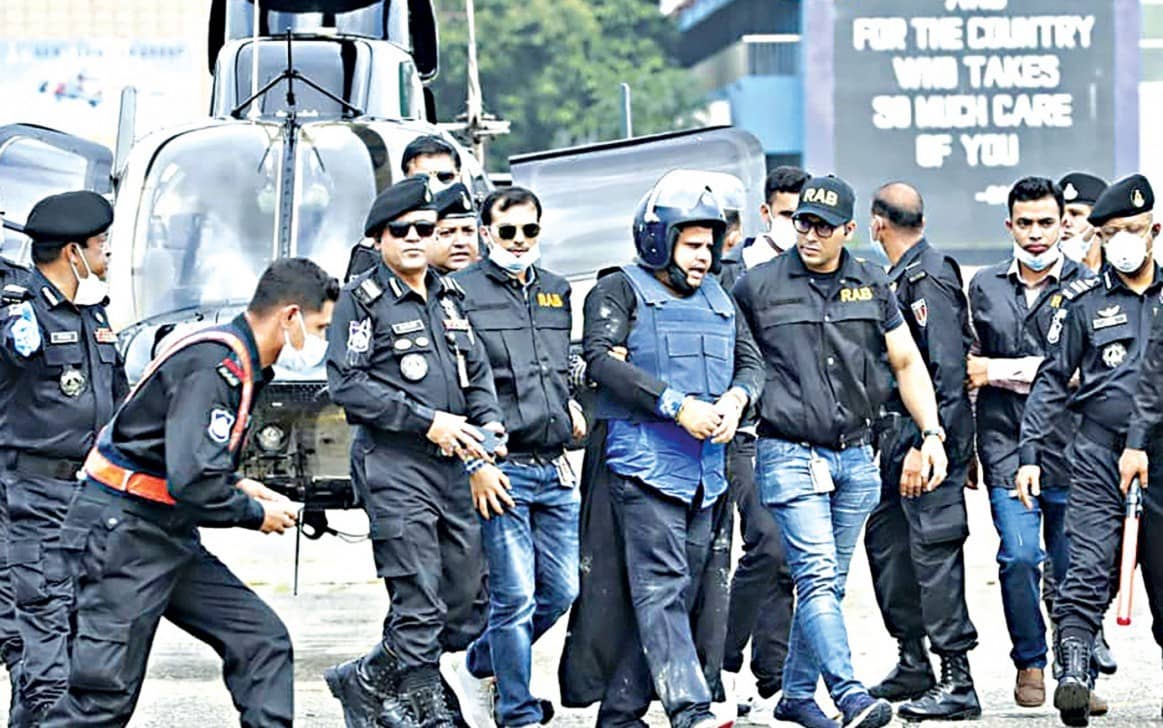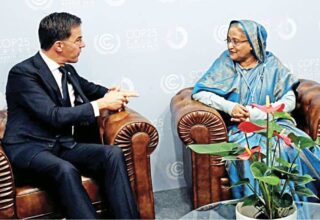
Recently, quite a number of reports have been published in both national and foreign media outlets about how two healthcare providers in Bangladesh issued fake Covid-19 certificates. Obviously, the negative coverage has tarnished the image of our nation abroad. We have had reports that the foreign minister had chaired a high-level, inter-ministerial meeting to discuss the immediate ramifications of these acts on our expatriate workers who are now staying abroad or planning to go back there after a few months of being in Bangladesh. The foreign ministry has also sent a letter to the Prime Minister’s Office urging action in this regard so that those returning or planning to return to their work abroad can do so with authentic Covid-19 negative certificates.
Except for some isolated events, the last two decades moved mostly in a positive direction as far as the image of our nation is concerned. One may recall that during the post-war years, a smear campaign was unleashed by Kissinger, the then US foreign secretary, who could not reconcile with the defeat of his geopolitical vision in Asia. But Bangladesh, particularly since the 1990s, started turning around from a poverty-stricken country to a dynamic, rapidly growing one, acclaimed far and wide.
In the 1990s, as a regular newspaper reader in the US when I was a graduate student, I used to come across references of Bangladesh in the print media there. Out of curiosity, I started keeping a log of such references. Within a few years, the number crossed several hundred. After a quick analysis, I found around two-thirds of those references as negative, while one-third presented Bangladesh in a positive light.
Three issues then were highlighted as positive developments in Bangladesh: a) success in population control in a low-income country, which invalidated the Western concept of demographic transition that family size depends on income level; b) the microcredit system spearheaded by Dr Yunus’ Grameen Bank in a country with huge poverty that also innovated some social engineering to provide people relief from extreme poverty. Finally, the resilience of the Bangladeshi people who, despite being badly battered by recurring climate disasters, can build back quickly. This trait of Bangladeshis earned commendation from the US press.
Now about two decades later, the basket of such positives has grown much bigger. Quite a number of our achievements in social and economic sectors are highly acclaimed the world over, touting Bangladesh as the newly emerging tiger in Asia. Our disaster management model, highlighted recently (after Amphan) in a column of The Guardian written by no other than Prime Minister Sheikh Hasina, is emulated by many countries, both developed and developing. Bangladesh now sends the highest number of peacekeepers in the world. The huge sacrifices—social, economic and environmental—that accompanied the sheltering of a million Rohingya refugees earned great accolades for the country. Also Bangladesh, being one of the countries that are most vulnerable to increasing climate impacts, is turning itself as a model of adaptation and learning for the world. This is being observed and commended globally.
Let me raise two pertinent questions here: why does the “image” of a nation really matter? How is it crafted in this age of electronic globalisation? There is a body of knowledge in International Relations called Image Theory. Economist Kenneth Boulding defined image as what we think the world is like—not what it is really like. So, we act the way the world appears to us, not necessarily the way it actually is.
This mutual reading of nations is important in the international system. The terms “image” and “perception” are sometimes used interchangeably, but perception can be interpreted as wider than image, which can be viewed as the product of perception. The image theorists argue that the consciousness of shared events and experiences in a nation is of vital importance. Our fight for independence against Pakistan, constantly remembered through ritual observances and the historical memory of people, is such a great shared event that gives constant inspiration for our march forward. Likewise, the US Declaration of Independence and the Gettysburg Address crystallise the national image in a form that is transmitted across generations. The historic 7th March speech of Bangabandhu Sheikh Mujibur Rahman in 1971, declared as a global knowledge heritage by the UNESCO, will be passed on to generations.
Thus, images are paramount in diplomacy, as they justify a nation’s desired reaction or treatment toward another nation. Obviously, a positive image of a state is a major factor in determining whether and how easily the state can realise its goal. Thus a desired image can often be of greater value than a significant increase in military and economic power. We may recall that colonial powers used to try to change their “imperialist” image into a “spreader of civilisation” image. The institutions like the British Council, the Goethe Institut, the Confucius Institute, student scholarships/fellowships and different exchange programmes are all meant for building positive images of the countries concerned.
However, until recently, the postures from top leaders and decision makers played the leading role in crafting the desired image. Now in the age of electronic globalisation, the postures of the masses are becoming more effective. Public diplomacy and people-to-people interactions are proving to be efficient tools in shaping the desired image. With rapid development of internet-based social networks, domestic developments and governance process are electronically transmitted in split seconds beyond borders, bypassing the official sources of information and communication. So, the difference between image and reality is getting more and more blurred. Obviously, image building is no more the responsibility or exclusive preserve of diplomats. I will argue that our diplomats are rather aide de camp—the camp being the whole of Bangladesh, where the behaviour of each individual, each leader and each institution, both within and without, matters, where astute diplomats actually serve as spokespersons on behalf of Bangladesh.
Against this backdrop, the behaviour of those unscrupulous caregivers—JKG or Regent Hospital—does not augur well for the country. The news of these negative developments spread like wild fire. The health minister’s response to the question of his presence in an agreement-signing ceremony between his ministry and Regent does not add to our cherished image. Such indifferent responses from a minister in addressing a mortal threat like Covid-19 cannot be swept under the rug. A wired world makes no difference between an ostrich and a whistleblower.
Originally this article was published on July 23, 2020 at The Daily Star. The author Dr. Mizan R Khan is the Deputy Director of International Centre for Climate Change & Development (ICCCAD), and Programme Director of LDC Universities’ Consortium on Climate Change (LUCCC).
Email: mizan.khan@icccad.org





